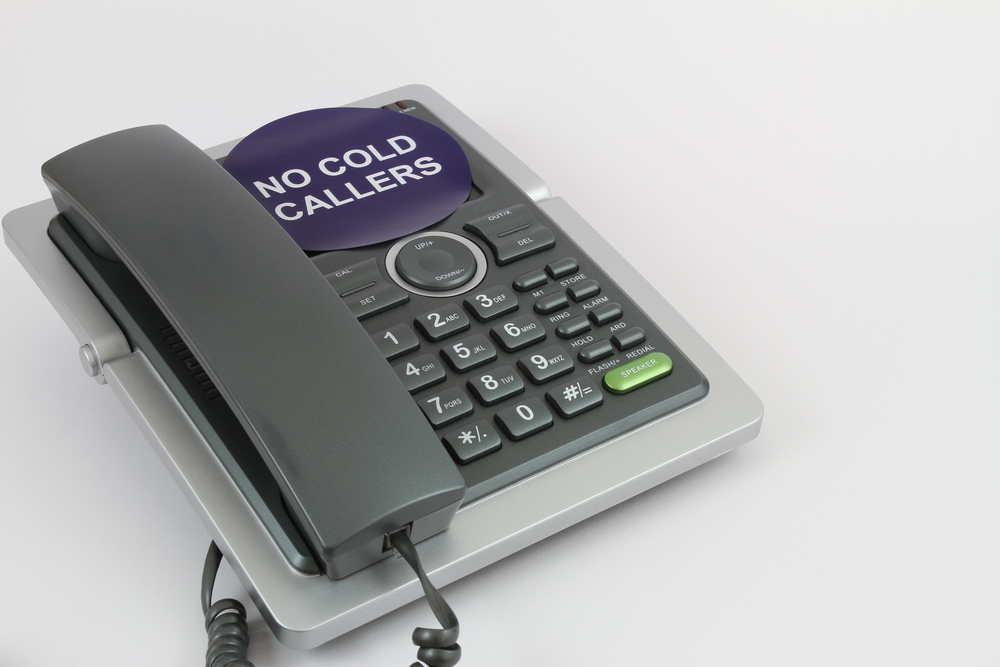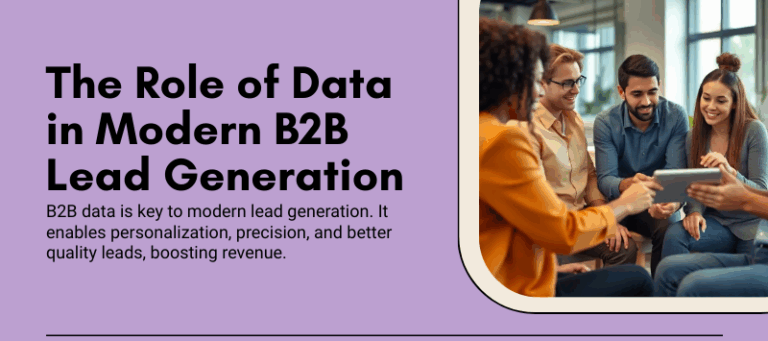
Rethinking Lead Generation in a No-Call Era
The traditional practice of cold calling is no longer the gold standard in lead generation. With call answer rates dropping below 2% in some industries, and buyers increasingly wary of unsolicited outreach, cold calling is seen by many as intrusive, inefficient, and outdated.
Today’s decision-makers are digitally empowered. They research solutions, read reviews, and explore options before ever speaking with a sales representative. This shift in behavior requires sales and marketing teams to adopt a more nuanced, customer-centric approach to lead generation—one that builds trust, creates value, and meets prospects where they are.
Why Cold Calling Is Losing Effectiveness
To understand why a no-cold-call approach is now viable (and often preferable), consider the following industry data:
- Only 1-2% of cold calls result in a meeting. (Bridge Group)
- Over 60% of buyers prefer not to interact with a salesperson as the primary source of information. (Forrester)
- Call blocking and screening tools reduce live answer rates significantly, especially among executive-level contacts.
- Remote work has dispersed office landlines, making reaching decision-makers by phone more difficult.
These trends highlight the need for a shift toward permission-based, inbound, and data-informed approaches to lead generation. Fortunately, companies today have access to a wide range of powerful tools and platforms to attract, engage, and convert leads—without ever picking up the phone.

Building a Lead Engine Without Cold Calling
Let’s explore the core strategies that modern organizations use to generate leads at scale, ethically and efficiently.
Content Marketing: Creating Value to Attract Leads
Inbound marketing begins with content. High-value, relevant content not only drives organic traffic but also nurtures trust with your target audience.
Key tactics include:
- Blog Posts: Optimize articles around search intent and long-tail keywords to drive relevant traffic. HubSpot reports that companies that blog consistently generate 67% more leads than those that don’t.
- Ebooks and Whitepapers: Offer downloadable resources behind lead capture forms. For B2B, whitepapers can convert at rates as high as 10-15%.
- Webinars: Interactive formats like webinars provide high perceived value and often lead to qualified follow-up discussions.
- Case Studies and Success Stories: These validate your offering and provide social proof—critical for conversion in high-trust industries.
Pro Tip: Use SEO best practices in all content to improve visibility. Optimized meta descriptions, headers, schema markup, and internal linking structures all contribute to stronger discoverability and lead capture.
Search Engine Optimization (SEO): The Organic Foundation
Organic search traffic is one of the most consistent and scalable sources of inbound leads. Investing in SEO ensures your ideal prospects find you on their own terms.
Focus areas:
- Keyword Research: Use tools to uncover high-volume, low-competition keywords aligned with your solution.
- Technical SEO: Optimize site structure, load speed, mobile performance, and crawlability to enhance rankings.
- Local SEO: For regionally focused businesses, build local citations and Google Business Profile optimizations.
- Backlink Acquisition: Gain backlinks from reputable sites to improve domain authority and trust signals.
Long-term SEO efforts compound over time and deliver steady lead volume without paying per click or dialing strangers.
Lead Magnets and Email Automation
Once visitors land on your site, turning that traffic into actual leads requires conversion tools and nurturing workflows.
- Lead Magnets: Offer gated content like checklists, templates, or reports in exchange for email addresses.
- Pop-ups and Slide-ins: Timed or intent-triggered forms help improve conversion without hurting user experience.
- Email Drip Campaigns: Once a lead is captured, automated email sequences can nurture them through the buyer journey. These campaigns can drive open rates of 30-50% when properly segmented and personalized.
- Behavior-Based Triggers: Tools like HubSpot, ActiveCampaign, and Mailchimp allow you to set up automated journeys based on page visits, downloads, or inactivity.
Combining lead capture with smart automation allows your business to engage leads while you sleep—and with no calls required.
Paid Media with Inbound Hooks
While cold calling interrupts, digital advertising attracts. Strategic use of paid media platforms enables you to amplify high-performing content or offers.
Effective formats:
- LinkedIn Lead Gen Ads: Perfect for B2B outreach. With built-in lead forms, these ads remove friction and deliver targeted, qualified leads.
- Google Search Ads: Bid on commercial-intent keywords to reach people already searching for your services.
- Facebook/Instagram Ads: These platforms are ideal for top-of-funnel lead generation through visual content and retargeting.
- Native Ads and Sponsored Content: Platforms like Outbrain or Taboola help extend your thought leadership content to wider audiences.
Use UTM tracking and landing page split tests to optimize performance over time.
Partnerships and Co-Marketing
One of the most underrated lead generation channels is through aligned partnerships. Instead of cold outreach, you can tap into the trust others have already built with your target market.
Ideas include:
- Co-hosted Webinars: Join forces with a complementary brand to double your reach and share leads.
- Affiliate or Referral Programs: Provide incentives for partners to send warm leads your way.
- Guest Posting: Writing for high-authority sites introduces your brand to new audiences.
- Industry Associations and Events: Sponsorships or speaking opportunities at trade events can deliver both brand lift and leads.
These efforts position you as a thought leader and create “warm” introductions at scale.
Social Media Engagement and Thought Leadership
Modern buyers spend a significant amount of time on platforms like LinkedIn, Twitter, and even TikTok. The goal isn’t just to be present—but to participate.
- LinkedIn Organic Posting: Share expertise, behind-the-scenes looks, and customer insights to build credibility and connections.
- Community Participation: Answering questions in groups or forums builds trust without hard selling.
- Live Video or Stories: Tools like Instagram Live or LinkedIn Audio give your brand a human voice.
These platforms also enable strategic direct messaging. Rather than spamming, a value-first message tailored to the recipient’s interests can outperform even the best cold call.
Intent Data and Smart Prospecting
Not all outreach is intrusive. When done right—with data to guide you—it becomes a form of value delivery.
Instead of dialing blindly:
- Use Buyer Intent Platforms: Tools like Bombora and G2 Buyer Intent reveal which companies are actively researching your category.
- Leverage Website Visitor Tracking: Platforms like Leadfeeder or Albacross show who’s visiting your site and what they’re reading—even if they didn’t fill out a form.
- Smart Lists in CRMs: Segment and score leads based on behavior and attributes so reps only reach out to high-fit, high-intent accounts.
- Warm Outreach Email Templates: Personal, relevant, and timely emails still work—especially when backed by strong intel and digital footprints.
This “no cold contact” form of outreach respects the prospect’s time and preferences, delivering better engagement and conversion rates.
Video Marketing and Visual Content
Video is the most consumed form of content on the web—and it converts.
- Explainer Videos: Help simplify complex solutions, making it easier for prospects to understand your value.
- Testimonials: Customer stories on video carry strong emotional weight and boost credibility.
- YouTube SEO: Ranking videos on YouTube (the world’s second-largest search engine) opens another inbound channel.
- Personalized Video Messages: Tools like Vidyard or Loom allow you to send tailored video introductions to prospects as a follow-up to site visits or downloads—without picking up the phone.
Data shows that video content increases landing page conversions by up to 86%.
Lead Qualification and Chatbots
One downside of replacing cold calls is potentially dealing with unqualified leads. That’s where smart lead qualification comes in.
- Live Chat and Chatbots: Tools like Drift or Intercom help pre-qualify leads instantly, route inquiries, or book meetings based on preset rules.
- Progressive Forms: Ask qualifying questions gradually across multiple visits instead of overwhelming users upfront.
- Scoring Models: Assign points based on behavior (downloads, page visits, etc.) and demographics to prioritize the most sales-ready leads.
This automation ensures your sales team only spends time on the best-fit opportunities.
The Metrics That Matter
To ensure long-term success, you must track and optimize lead generation efforts with clarity. Key performance indicators (KPIs) to monitor:
- Cost per Lead (CPL): How much you’re paying for each lead from each source.
- Lead-to-MQL and MQL-to-SQL Ratios: Helps understand lead quality and handoff effectiveness.
- Conversion Rate: What percentage of visitors are turning into leads? From leads to customers?
- Channel ROI: Lifetime value (LTV) of leads from each source versus acquisition cost.
Using tools like Google Analytics, HubSpot, or your CRM’s reporting suite, tie these metrics to campaign activity and continually improve.

Can You Generate Leads Without Cold Calling?
Yes. Businesses can generate high-quality leads without cold calling by using inbound marketing, SEO, lead magnets, paid advertising, and automation tools. Instead of interrupting potential customers, these strategies focus on attracting, educating, and converting them based on interest and intent.
What Is the Best Way to Generate Leads Without Cold Calling?
There isn’t a single “best” way, but the most effective strategies include:
- SEO and content marketing: Drive organic traffic with blog posts, pillar pages, and case studies.
- Email marketing and automation: Use behavior-triggered emails to nurture leads over time.
- Webinars and virtual events: Provide value while collecting attendee data.
- Social selling: Engage with prospects through LinkedIn posts, direct messages, and industry groups.
- Paid lead gen ads: Platforms like LinkedIn and Facebook offer lead forms that convert well without phone calls.
- Lead capture tools: Use pop-ups, chatbots, and gated content to collect contact information.
These methods scale more efficiently than cold calling and often result in warmer, more qualified leads.
How Do You Attract Leads Organically?
Attracting leads organically involves offering valuable content that matches your audience’s search intent. The steps below outline a scalable approach:
- Perform keyword research: Use tools to identify keywords your audience searches for.
- Create educational content: Write blog posts, guides, and FAQs targeting those keywords.
- Optimize for SEO: Include your target keyword in titles, meta descriptions, and headers.
- Add clear calls to action (CTAs): Encourage users to download a lead magnet, subscribe, or schedule a demo.
- Leverage internal linking: Guide readers to high-conversion pages on your site.
Organic strategies are long-term assets that continue generating leads after they’re published.
What Is a Lead Magnet and How Does It Help?
A lead magnet is a free piece of valuable content offered in exchange for a prospect’s contact information. It helps generate leads by:
- Creating a low-friction offer that users are willing to trade an email for
- Qualifying leads based on the type of magnet downloaded
- Giving sales teams insight into what the prospect cares about
Examples of lead magnets:
- Checklists
- Downloadable templates
- How-to guides
- Research reports
- Interactive quizzes
- Free trial or demo
Lead magnets reduce the need for cold calls by encouraging prospects to raise their hand first.
Is Cold Emailing Better Than Cold Calling?
Cold emailing, when done legally and strategically, is often more efficient than cold calling. Here’s why:
- Higher scalability: You can reach hundreds of contacts at once.
- Less intrusive: Recipients can respond on their own time.
- Easy to track: Open rates, click-through rates, and replies provide clear metrics.
- Easier to personalize: Emails can include relevant case studies or content links.
However, success depends on targeting, personalization, and compliance with laws like GDPR and CAN-SPAM. When cold email is permission-based and value-driven, it performs significantly better than unprompted phone calls.

What Tools Help You Generate Leads Without Calling?
Here’s a curated list of tools for call-free lead generation:
| Function | Top Tools |
| Keyword Research | Semrush, Ahrefs, Ubersuggest |
| Landing Pages & Forms | Unbounce, Leadpages, ConvertFlow |
| Email Automation | Mailchimp, ActiveCampaign, Klaviyo |
| Lead Scoring & CRM | HubSpot, Pipedrive, Zoho CRM |
| Chatbots & AI Engagement | Drift, Intercom, Tidio |
| Webinar Hosting | Zoom, WebinarJam, Demio |
| Social Scheduling | Buffer, Hootsuite, SocialBee |
Each of these tools supports inbound strategies that keep your lead pipeline full—without relying on cold outreach.
How to Warm Up Leads Without Calling Them
Warming up leads involves building familiarity and trust before making any sales pitch. Tactics include:
- Retargeting ads: Serve ads to website visitors who didn’t convert the first time.
- Drip campaigns: Nurture leads with a series of helpful emails.
- Interactive content: Use quizzes, calculators, and surveys to engage users.
- Personalized landing pages: Show content relevant to the user’s behavior or industry.
- Account-based marketing (ABM): Use intent data and website behavior to send relevant materials to targeted companies.
These methods build a “warm” audience that’s more receptive to your message—without ever needing a phone call.
Why Is Inbound Marketing More Effective Than Cold Calling?
Inbound marketing outperforms cold calling in most industries for several reasons:
- Pull vs. Push: Inbound attracts prospects already seeking a solution, while cold calling interrupts.
- Scalability: Once content is created, it generates leads continuously without extra effort.
- Trust Building: Content, reviews, and testimonials warm leads before sales gets involved.
- Lower Cost per Lead (CPL): Inbound leads often cost 61% less than outbound ones.
- Data-Driven: You can analyze behavior and optimize campaigns with more precision.
Today’s buyers do research first. Inbound lets you be part of that research journey.
Top-of-Funnel (TOFU) Lead Generation Tactics
The top of the funnel is about attracting attention and collecting information from a broad audience. High-performing TOFU tactics include:
- Educational blog content
- Infographics and data visualizations
- Industry reports
- Podcast episodes
- YouTube tutorials
- Social media carousels
- Free tools (e.g., calculators, audits)
The more value you provide upfront, the more likely visitors will trust you with their information—no outbound sales needed.
Lead Qualification Without Sales Calls
You can qualify leads without ever speaking to them by combining the following techniques:
- Progressive form fields: Ask deeper questions on subsequent visits.
- AI chatbots: Use conversational scripts to determine need, budget, and timing.
- Behavioral tracking: Monitor page views, downloads, and return visits.
- Lead scoring models: Assign points to actions and attributes like industry, company size, or content engagement.
- Self-booked calendars: Let serious leads schedule a meeting when they’re ready.
These tools allow sales reps to focus on the best-fit leads while automation handles the rest.

What to Do After a Lead Converts (Without Picking Up the Phone)
Once a lead fills out a form or downloads a resource, here’s how to move them along the buyer’s journey:
- Send a thank-you email with a link to more relevant content.
- Add them to a nurturing sequence based on what they downloaded.
- Use retargeting ads to keep your brand top of mind.
- Provide a self-service demo or on-demand walkthrough video.
- Score and segment the lead to determine readiness and route appropriately.
You’re creating a personalized, helpful experience that replaces the need for manual follow-up.
Can Social Media Replace Cold Calling?
In many cases, yes—especially in B2B. Platforms like LinkedIn are ideal for connecting with decision-makers.
Tips for success:
- Optimize your profile with a clear value proposition.
- Share original insights and curated content regularly.
- Use LinkedIn Sales Navigator to identify key accounts.
- Send connection requests with context—not a pitch.
- Engage with posts and join relevant comment threads.
Social selling leads to conversations—conversations that convert—without the need for a cold dial.
Moving Beyond Cold Calls to Smarter Lead Generation
The landscape of lead generation has shifted. Cold calling, once a staple of outbound efforts, now often delivers diminishing returns and damages brand equity in a world that values personalization and relevance.
By focusing on inbound marketing, SEO, content, partnerships, automation, and intent-based outreach, businesses can build a scalable, sustainable, and respectful lead generation engine. The goal is no longer interruption—it’s attraction.
Generating leads without cold calling isn’t about avoiding the hard work. It’s about doing the smart work: delivering value upfront, earning attention organically, and creating systems that build relationships before the first conversation even starts.
In this new era, trust is the true currency of conversion—and the companies that build it without forcing a phone call are the ones most likely to win.



